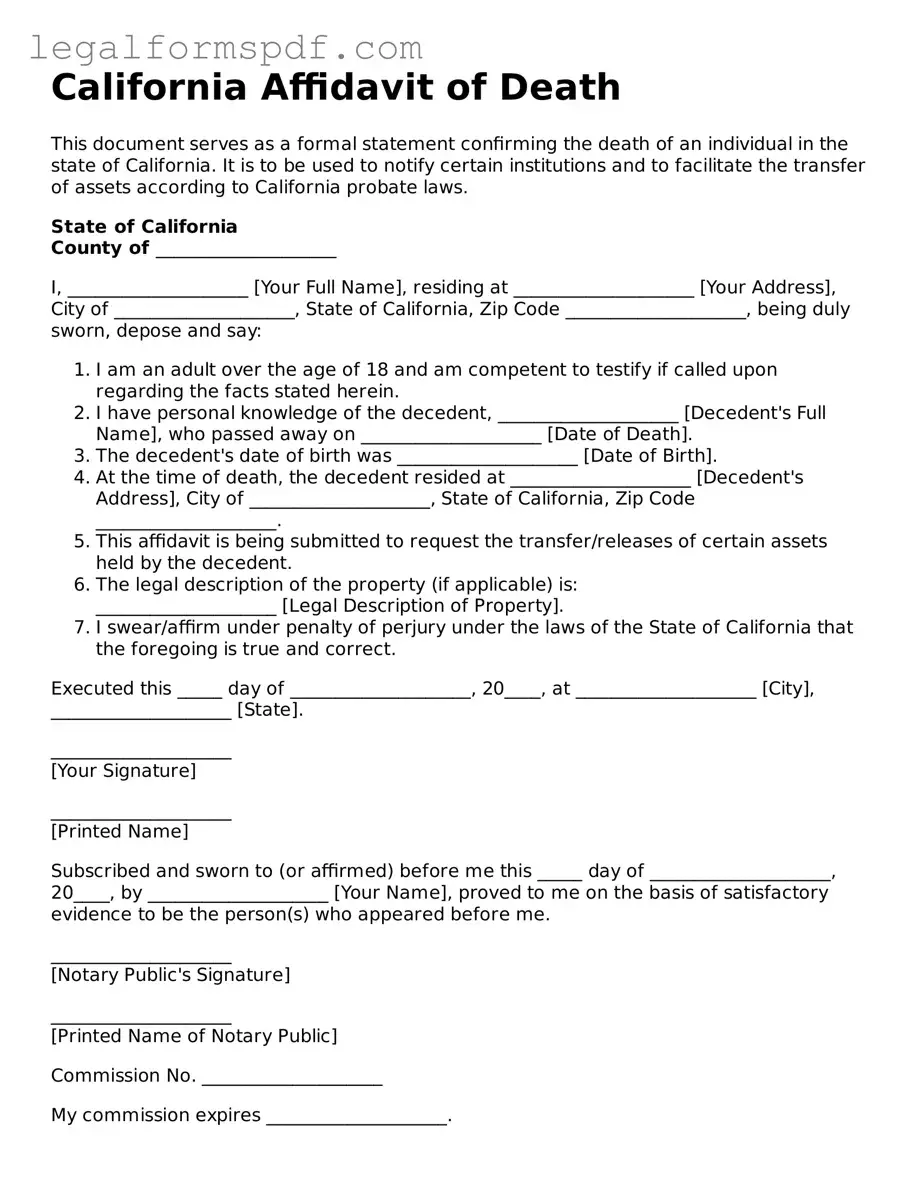What is a California Affidavit of Death form?
An Affidavit of Death form is a legal document used in the state of California to officially declare the death of an individual. This document is typically used to notify businesses, courts, and agencies to update records or transfer assets according to a will or the state’s succession laws.
Who needs to fill out an Affidavit of Death form?
This form is usually filled out by a surviving spouse, a close relative, the executor of the deceased’s estate, or anyone who has a legal interest in the estate of the deceased. It serves as a formal notification to relevant entities about the person’s death.
Where can I obtain an Affidavit of Death form in California?
You can obtain this form from several sources including legal aid offices, some courthouses, or online legal services. Many county recorder's offices in California also provide forms or can guide you on where to find them.
What information do I need to complete the form?
Completing the form requires information about the deceased, including their full name, date of death, and county of death. You'll also need to describe the relationship between the deceased and the person filling out the form, and detail the property or interest affected by the death.
Do I need to file the Affidavit of Death with the county recorder?
Yes, in most cases, the Affidavit of Death needs to be filed with the county recorder's office in the county where the deceased owned property. This filing is crucial for the legal transfer of real property and to ensure all records are updated accordingly.
Is there a fee to file the Affidavit of Death form?
Yes, there is typically a filing fee associated with recording the Affidavit of Death. The fee can vary by county, so it’s a good idea to contact the local recorder’s office to find out the exact amount.
How long does it take for the form to be processed?
The processing time can vary significantly depending on the county recorder’s office. However, once submitted, it usually takes a few weeks to a couple of months for the form to be processed and for records to be updated.
Do I need a lawyer to fill out an Affidavit of Death form?
While it is not mandatory to have a lawyer fill out the form, consulting with a legal professional specializing in estate planning or probate law can be beneficial, especially if the estate of the deceased is complex or if you are unsure about the process.
What should I do if I make a mistake on the form?
If you make a mistake while filling out the form, it’s important to correct it before submitting. If the form has been filed, contact the county recorder's office where the document was recorded to learn about the process for making corrections. They may require filing an amended affidavit or a new form to correct the error.
